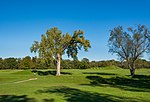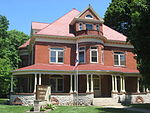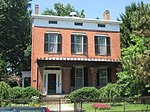Unioto High School

Unioto High School is a public high school near Chillicothe, Ohio. It is the only high school in the Union-Scioto Local School District. The school colors are purple and gold. The name Unioto is a portmanteau of the two townships that the school district primarily serves in Ross County: Union Township and Scioto Township. The current high school building is situated on land that was once owned and operated by the United States Army as Camp Sherman. Camp Sherman operated from 1917 until 1920. Its purpose was to train U.S. Army soldiers for service in France during the First World War. The school is surrounded today by property still owned by the government. Nearby are the following: Chillicothe Correctional Institution Ross Correctional Institution The Chillicothe Correctional Institutions State Penal Dairy Farm The Chillicothe Veterans Administration Hospital The Hopewell Culture National Historical Park (Mound City)
Excerpt from the Wikipedia article Unioto High School (License: CC BY-SA 3.0, Authors, Images).Unioto High School
Egypt Pike,
Geographical coordinates (GPS) Address Nearby Places Show on map
Geographical coordinates (GPS)
| Latitude | Longitude |
|---|---|
| N 39.3661111 ° | E -83.0130556 ° |
Address
Union Scioto Schools
Egypt Pike
45601
Ohio, United States
Open on Google Maps









